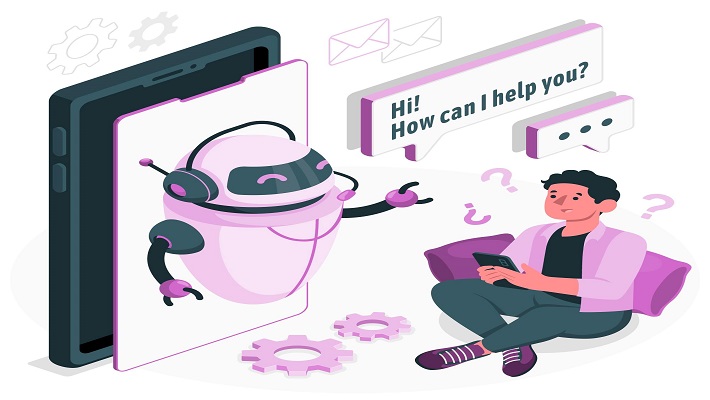
Chatbots have been normalized in communications on many product/service-oriented websites. It was previously capable of interacting with the website visitor with scripted questions accompanied by pre-programmed answers.But now, it can interact in a human-like fashion with advances in language models.
They have become an integral part of our lives. From answering customer queries on websites to assisting users with tasks, chatbots have evolved to be intelligent and sophisticated thanks to advances in natural language processing (NLP) and machine learning. You're in the right place if you're eager to create your own language model-based chatbot from scratch. This step-by-step guide will walk you through building a chatbot that can hold conversations and perform tasks.
Define the Purpose and Scope
Before diving into the technical aspects, you must clearly define your chatbot's purpose and scope. What problem will it solve, or what tasks will it perform? This step is crucial as it sets the direction for the entire project. Decide if your chatbot will be general-purpose or specialized in a particular domain.
Choose a Framework or Language
First, you must choose your project's correct programming language or framework. Python is famous for NLP tasks due to its extensive libraries and tools.
Collect and Prepare Data
Data is the lifeblood of your chatbot. Gather a dataset of conversations or text data relevant to your chatbot's purpose. Preprocess this data by cleaning and formatting it, ensuring it's in a format suitable for your model. Remember to tokenize the text and remove any unnecessary information.
Select a Language Model
Choosing a pre-trained language model is a critical decision—models like GPT-3, GPT-4, BERT, or similar offer excellent language understanding capabilities. You can leverage Python's Hugging Face Transformers library to work with these models.
Fine-Tuning (Optional)
If your chatbot needs domain-specific knowledge or behavior, consider fine-tuning the pre-trained model on your dataset. Fine-tuning allows you to adapt the model to your specific requirements.
Set Up a Development Environment
Ensure you have a clean development environment by installing the necessary libraries and dependencies. Setting up a virtual environment can help manage your project's dependencies effectively.
Build the Chatbot
Now comes the exciting part – building the chatbot. Write the code to interact with the language model. Depending on your project's requirements, you may need to implement a user interface (UI) such as a web app or a command-line interface. Develop the conversation logic, including how the chatbot understands and generates responses.
Natural Language Processing (NLP)
Consider implementing NLP techniques if your chatbot needs additional capabilities like sentiment analysis, entity recognition, or intent detection.
Testing and Debugging
Before deploying your chatbot, rigorous testing and debugging are essential. Test it with various inputs to identify and fix any bugs. Continuously monitor the chatbot's performance and make improvements based on user feedback.
Deployment
Once your chatbot is ready, it's time to deploy it to a server or a cloud platform so users can access it. Ensure that the deployment is scalable and reliable.
Security and Privacy
Implement robust security measures to protect user data and prevent malicious use. Adhere to privacy regulations and best practices.
Continuous Improvement
A chatbot is never truly "finished." Collect user feedback and usage data to make ongoing improvements. Regularly update your chatbot to adapt to changing user needs.
User Training (Optional)
If applicable, allow users to train the chatbot to improve its responses over time. This can enhance the user experience significantly.
Documentation and Support
Create comprehensive documentation for users and developers, explaining how to use and extend the chatbot. Offer customer support for users who have questions or issues.
Compliance and Ethical Considerations
Ensure that your chatbot complies with relevant laws and regulations. Address ethical considerations, such as bias mitigation, by being aware of potential biases in your data and model.
Building a language model-based chatbot is an exciting and rewarding journey. Remember that it's an iterative process; continuous refinement and enhancements are vital to making your chatbot more valuable and user-friendly. Stay updated with the latest advancements in NLP and machine learning to keep your chatbot's performance at its best.
Now, it's time to start and bring your chatbot idea to life!







